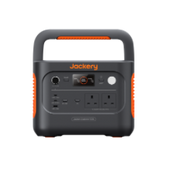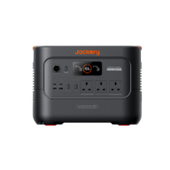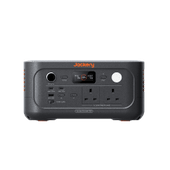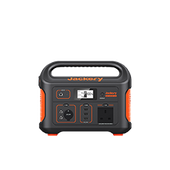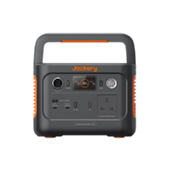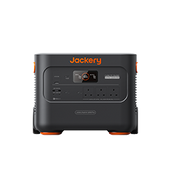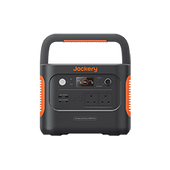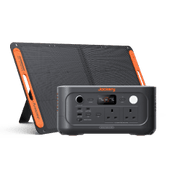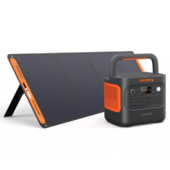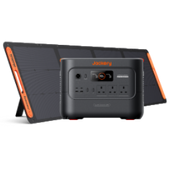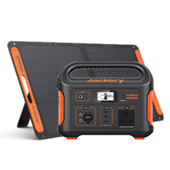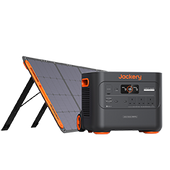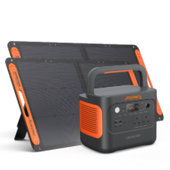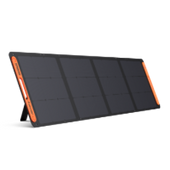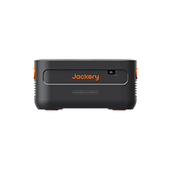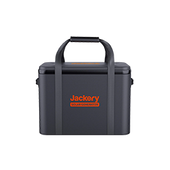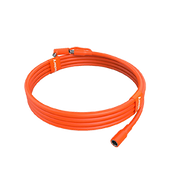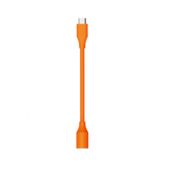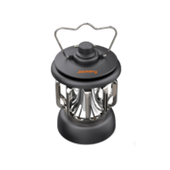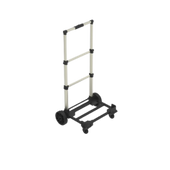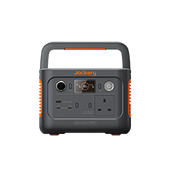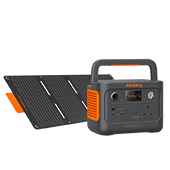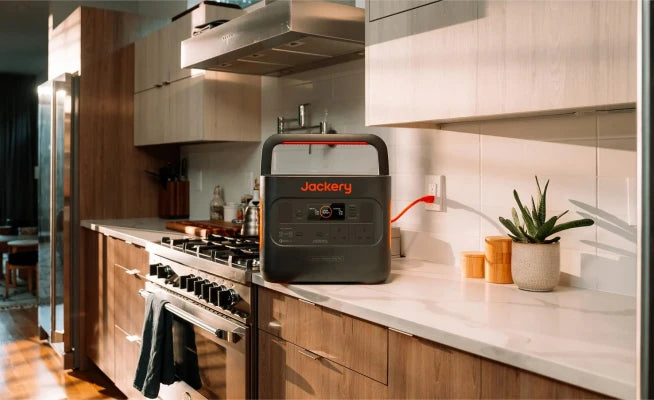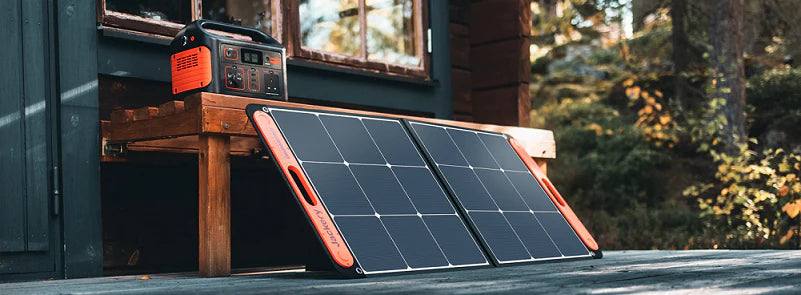As electricity prices in the UK remain high, more homeowners are looking for sustainable solutions like solar power for homes. The energy price cap in the country is set to increase by 6.4% by April 2025, which will push the average annual energy bill to £1,849. The continuous rise in electricity prices makes solar power station systems a smart choice for homeowners all across the UK.
Solar power for home can help reduce electricity bills, encourage energy independence, and also lower carbon emissions. With recent advancements, installing a home solar system has become more accessible, with free tools available for system planning and cost estimation.
This guide explores how to build a solar energy system for your home and will review the best free tools for designing it.
Top 10 Free Tools for Designing a Home Solar Energy System
Opensolar
OpenSolar is a free, web-based solar design and sales platform. It offers tools for designing PV systems, allowing users to create accurate solar proposals and system designs.
Limitation: It requires internet access and may have a learning curve for new users.
Site: https://www.opensolar.com/
PVSOL Online
It is a web-based application that allows users to simulate and design photovoltaic systems for their homes. It provides insights into the performance of your solar generator for houses. It also enables users to identify potential shading issues to ensure the system generates enough electricity for home use.
Limitation: The tool lacks advanced 3D shading analysis, limiting accuracy for complex roof layouts.
Site: https://pvsol-online.valentin-software.com/#/
PVGIS Estimation Utility
The Photovoltaic Geographical Information System (PVGIS) provides detailed information on solar radiation and PV system performance across Europe and Africa. Users can determine the best panel tilt angle, check how much sunlight their location gets, and estimate how much energy their system will produce. This tool is invaluable for understanding the relationship between a proposed solar energy system for a home and its geographical location.
Limitations: The tool may underestimate the efficiency of modern solar panels and overestimate power losses based on default settings.
Site: https://re.jrc.ec.europa.eu/pvg_tools/en/tools.html
SMA Sunny Design
Developed by SMA, a leading manufacturer of solar inverters, Sunny Design is a comprehensive tool for planning solar power for the home. It generates detailed reports based on panel type, location, orientation, and roof pitch.
The software enables users to select the right cable size to ensure efficient energy transfer from the solar panels to the inverter and battery. This helps minimize power loss and enhances the system's efficiency. It also allows users to compare different solar panel models easily.
Limitations: Primarily applicable to solar PV systems that use SMA inverters. Location details are generalized, basing designs on solar radiation data from the nearest large town.
Site: http://www.sunnydesignweb.com/sdweb/#/Home
Fronius Solar.creator
Fronius is an Austrian manufacturer of high-quality solar inverters. It is a free online configuration tool that helps homeowners design and optimize PV systems by considering various factors to ensure efficient energy production. Its user-friendly interface makes it a perfect choice for both beginners and professionals.
Limitations: Applicable mainly to solar PV systems utilizing Fronius inverters.
Site: https://www.fronius.com/en-gb/uk/solar-energy/installers-partners/products-solutions/monitoring-digital-tools/design-pv-system-solar-creator
Renusol PV Configurator 3
Renusol's PV Configurator 3 is an online tool that provides detailed information and measurements for mounting solar panels under various conditions. It assists in designing mounting systems tailored to specific installation scenarios.
Limitations: Best suited for systems using Renusol mounting equipment.
Site: https://www.renusol.com/en/configurator/
SolarEdge Designer
SolarEdge Designer is an advanced tool that utilizes the latest technology to optimize solar power for home systems. It includes electrical calculations and integrates accurate environmental data to enhance system performance.
Limitations: Designed for PV systems incorporating SolarEdge inverters and optimizers.
Site: https://www.solaredge.com/en/products/software-tools/designer
Onyx Solar Energy
Onyx Solar is a photovoltaic glass configurator that specializes in designing building-integrated photovoltaic (BIPV) solutions. It offers photovoltaic glass solutions that can be easily integrated into windows, facades, and walkable floors.
Limitations: The tool primarily focuses on large-scale projects, which limits its use for residential users.
Site: https://onyxsolar.com/photovoltaic-estimation-tool
Schletter Configurator v3
The Schletter Group's Configurator v3 is a global leader in photovoltaic mounting solutions. This tool assists users in designing mounting systems that are compatible with various solar panels.
Limitations: Tailored for use with Schletter mounting systems.
Site: https://www.schletter-group.com/services/configurator/
Solar.com
Solar.com has a free solar panel calculator through which users can estimate the system size they need for their homes. It also calculates potential savings and environmental impact based on user inputs like location and energy consumption.
Limitations: The estimates made by Solar.com may vary because of local factors considered by the tool.
Site: https://www.solar.com/calculator
Design A Solar Energy System for Home – A Step-by-Step Guide
A solar energy system for your home must deliver optimal performance throughout the year. Here is a step-by-step guide on how to install a system of solar power for home use.

Determine Power Consumption Demands
The first step in designing an efficient system of solar power for your home is to determine your home's energy consumption.
§ List all electrical appliances in your home and note their power ratings (in watts). Also, determine the average hours they run daily.
§ Now, multiply the power rating of each appliance by its usage time to calculate its daily energy consumption in watt-hours (Wh).
§ Then add these values to get the total daily energy demand of your house. To account for system energy losses, multiply your answer by 1.3, ensuring your solar power home system can generate enough power to meet your needs efficiently.
This calculation is essential for adequately sizing the photovoltaic (PV) modules and other system components. It will also give you a clear understanding of your daily energy requirements, enabling you to design a system best suited to your household needs.
Size the PV Modules
Once you have calculated your household's daily energy consumption, the next step is to determine the size and number of PV modules required for your solar power system. The power output of PV modules varies based on size, efficiency, and the amount of sunlight they receive.
To find the correct PV module size:
§ Calculate the total Watt-peak (Wp) rating needed by dividing your total daily energy consumption (in Watt-hours) by the panel generation factor for the UK.
§ To determine the number of panels required, you need to divide the total Wp rating by the rated output of a single panel. Round up to the next whole number to ensure sufficient energy production.
Proper panel sizing ensures the solar energy system for your home generates enough power to meet or exceed your daily needs. Installing more PV modules improves system performance and extends battery life, whereas a few panels will lead to power shortages, especially during cloudy periods.
Inverter Sizing
The inverter converts the DC electricity generated by the PV modules into AC electricity, making it compatible with household appliances. Select an inverter with a capacity that matches or slightly exceeds the total wattage of your PV array to handle the maximum power output.
For stand-alone systems, the inverter should be 25-30% larger than the total wattage of appliances to handle peak loads. In grid-tied systems, the inverter’s input rating should match the PV array rating for safe and efficient operation.
Battery Sizing
If you opt for a solar energy system for your home, make sure to choose properly sized batteries. High-performance batteries can store excess energy generated during the day that you can use at night or during cloudy periods. Deep-cycle batteries are a top choice for solar-powered homes, as they are designed for repeated charging and discharging over many years.
To determine the required battery capacity:
§ Calculate your daily energy consumption in watt-hours (Wh).
§ Account for system losses by dividing your daily consumption by 0.85 (battery loss) and 0.6 (depth of discharge).
§ Determine capacity in ampere-hours (Ah). To do so, divide the above value by the nominal battery voltage and multiply by the required autonomy days (the number of backup days needed).
Other factors to consider are battery lifespan, temperature effects, and battery maintenance requirements.
Solar Charge Controller Sizing
When selecting a solar charge controller for your solar power system, you have two choices: Pulse Width Modulation (PWM) or Maximum Power Point Tracking (MPPT). MPPT controllers are more efficient, especially if you have a larger system. They can optimize power conversion from the PV array. However, make sure the controller is compatible with your system voltage and can handle the maximum current output from the solar panels.
Moreover, look for features like temperature compensation and load control to enhance system performance and battery lifespan.
Portable Solar Generator Sizing
If setting up solar power for your home seems like a lot of hassle, you can also invest in a portable solar power generator and save money on electricity bills. However, before choosing a portable solar generator, first determine the energy requirement of all your essential devices. This will help you select a generator with adequate capacity and battery storage.
When selecting a generator, consider portability and ease of use, especially for outdoor activities or emergencies. Assess recharging time and methods, such as solar, AC, or car charging, for maximum flexibility. Moreover, check for durability and warranty to ensure long-term performance. A reliable solar power setup keeps your home powered during extended outages.
Calculating the Cost of Building a Solar Power System for Home
The cost of solar power for a home depends on several factors, including system size, components, installation, and government incentives. Here are some of the key expenses involved in creating a system of solar power for home use.
1. Solar Panels (£6,000 – £8,000): The cost of solar panels depends on their type (monocrystalline, polycrystalline, or thin-film), efficiency, and power output. For example, a typical 4kW system in the UK is suitable for an average home, costing around £6,000 – £8,000 for panels alone.
2. Inverter (£500 – £2,000): The inverter converts DC electricity from the panels into AC for household use. The price depends on the type (string, micro, or hybrid inverter) and capacity.
3. Battery Storage (£2,000 – £7,000, optional): Opting for energy storage (whether deep-cycle batteries or lithium-ion systems) increases the costs of your solar system but improves energy independence. For instance, a 5 kWh battery costs around £3,500 – £5,500, but it increases energy independence, allowing you to stay lit during an extended power breakdown.
4. Portable Solar Generator (£1000 – £3000): Solar generators are self-contained units that combine a battery, an inverter, and sometimes even integrated solar panels. They are typically used as backup or portable power solutions. In the UK market, a decent quality solar generator generally costs between £1,000 and £3,000. It enhances the flexibility and mobility of a solar power home system beyond merely serving as a backup during power outages. Indoors for specific tasks or outdoors for events and remote work? All in cover.
5. Solar Charge Controller (£100 – £500): A charge controller regulates power flow and prevents overcharging. MPPT controllers are efficient but also quite expensive.
6. Installation and Labor (£1,500 – £3,000): Professional installation adds to the cost of the solar power for your home system, depending on roof complexity, wiring, and labour fees.
7. Permits and Miscellaneous Costs (£500 – £1,000): These include permits, mounting structures, wiring, and monitoring systems. A typical 4kW grid-tied system in the UK costs £6,000 – £10,000, while an off-grid setup with battery storage can exceed £12,000. However, government incentives like the Smart Export Guarantee (SEG) can help offset these costs.
So, the overall cost of installing a solar power system for a home is:
1. Basic Components (excluding battery storage and solar generator):
· Solar Panels: £6,000 – £8,000
· Inverter: £500 – £2,000
· Solar Charge Controller: £100 – £500
· Installation and Labor: £1,500 – £3,000
· Permits and Miscellaneous Costs: £500 – £1,000
Calculation for the system without battery storage:
· Lowest cost: £6,000 + £500 + £100 + £1,500 + £500 = £8,600
· Highest cost: £8,000 + £2,000 + £500 + £3,000 + £1,000 = £14,500
2. Including Optional Battery Storage:
· Battery Storage: £2,000 – £7,000
Adding the battery storage cost:
· Lowest cost: £8,600 + £2,000 = £10,600
· Highest cost: £14,500 + £7,000 = £21,500
3. Including Battery Storage and Optional Solar Generator
If one opts to add both the battery storage and a solar generator to the basic system:
· Lowest cost: £8,600 + £2,000 (battery) + £1,000 (solar generator) = £11,600
· Highest cost: £14,500 + £7,000 (battery) + £3,000 (solar generator) = £24,500
|
Summary of Solar Power System Cost: |
|
· System without battery storage: Total cost is approximately £8,600 to £14,500 · System with battery storage: Total cost is approximately £10,600 to £21,500 · System with both battery storage and solar generator: Total cost is approximately £11,600 to £24,500 |
Jackery Solar Generator 2000 v2: Best Choice for Home Solar System
The Jackery Solar Generator 2000 v2 is an excellent choice for homeowners looking for reliable and efficient solar power for home backup solutions. With a massive 2042Wh capacity and 2200W output, it can power essential household appliances like refrigerators, heaters, and ovens during outages. Unlike traditional generators, it operates silently and requires no fuel. This makes it an eco-friendly alternative for backup power for homes in the UK.

One of its standout features is fast charging. With Emergency Super Charge Mode, it can reach 80% in just 52 minutes, ensuring you are never left without power. Moreover, Jackery Solar Generator 2000 v2 offers versatile recharging options and supports wall charging (1.7 hours), 2*Jackery SolarSaga 200W Solar Panels or 400W solar panels for solar charging (5.5 hours), and in-vehicle charging (24 hours).
Weighing just 38.6 lbs, the Jackery Solar Generator 2000 v2 is compact and portable. Its easy-to-transport feature makes it perfect for outdoor living and emergency preparedness. It is equipped with an advanced LiFePO4 battery with EV-grade CTB technology. This ensures the durability and longevity of the entire unit, giving you an energy source that stays reliable for years.
Concluding Thoughts
Designing a solar power system for your home requires careful planning and consideration. However, free tools can simplify the process by helping you accurately size PV panels, inverters, and batteries. The Jackery solar power stations are an excellent option for those seeking a reliable backup. They are high-capacity and easy to set up, making them a reliable choice for novice users. With Jackery solar systems, homeowners can enjoy greater energy independence, lower their electricity bills, and even organize outdoor barbeques during weekends!
Reference:
https://www.theguardian.com/business/live/2025/feb/25/energy-price-cap-rise-britain-households-england-scotland-wales-april-rationing-business-live-news



